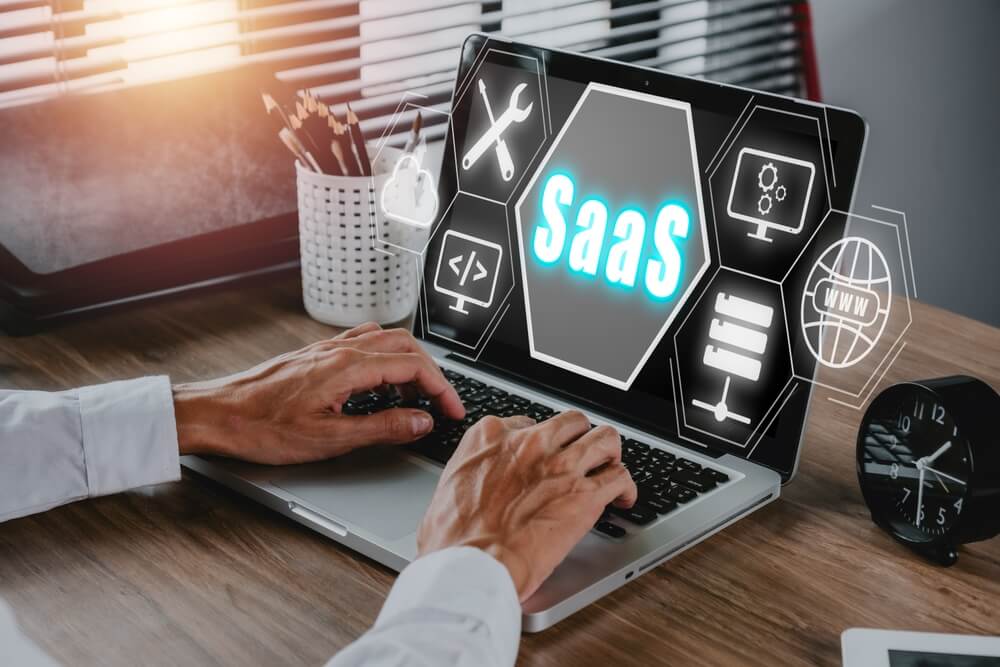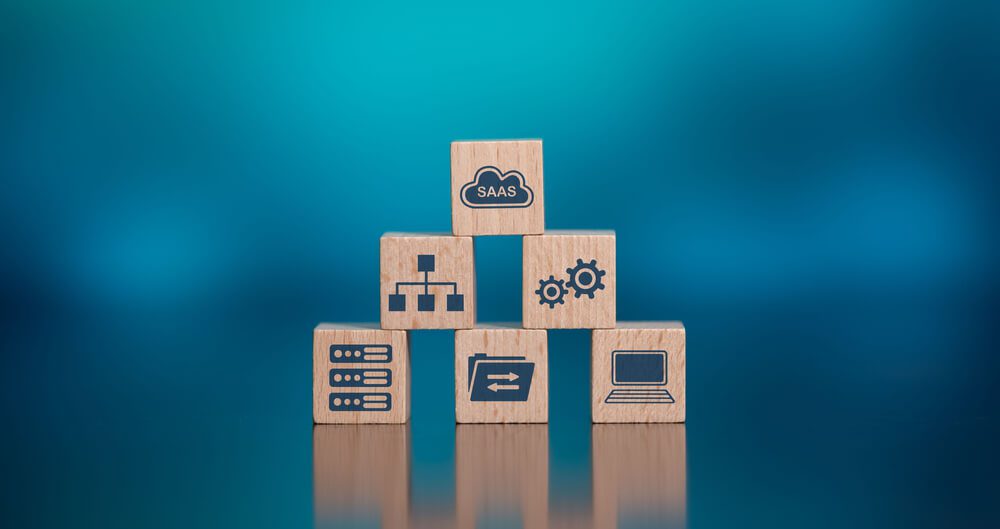
SaaS Customer Retention Metrics and KPIs: You Must Not Make Mistakes Here!
Customer retention is the lifeblood of software-as-a-service (SaaS) businesses. Do you know how to measure it?
A SaaS marketing agency helps you pick and evaluate the right key performance indicators (KPIs) and metrics. This article covers the most essential and more:
- What are the differences between KPIs, metrics, and benchmarks?
- What other KPIs should you track along with customer retention?
Analyzing the correct retention data remains one of the biggest SaaS marketing challenges. Read below to overcome it. Let’s go!
Want to know how we help SaaS businesses stand out from the crowd? Watch this video to learn how DAP makes it happen!
KPIs vs. Benchmarks vs. Metrics
As you examine SaaS customer retention, you will come across interrelated terms:
- KPIs
- Metrics
- Benchmarks
Even the savviest marketers often use these terms interchangeably. However, each one is a distinct factor in data collection related to customer retention.
KPIs are specific, quantifiable measures used to track performance against strategic goals. Great examples include conversion, marketing, customer support, customer retention, and engagement.
Metrics are broader performance measurements that often feed into KPIs.
Meanwhile, benchmarks set target values for KPIs and metrics through analysis of historical data, industry standards, and business objectives. For example, a SaaS company might benchmark a target annual churn rate of less than 5% or aim for 110% net revenue retention annually.
The table below shows how they benefit data analysis and business performance:
| KPIs | Metrics | Benchmarks |
|---|---|---|
| - Focus on the vital few measurements that provide real insight - Provide quantifiable data to guide strategic decisions around resource allocation, marketing campaigns, pricing, feature development, and more - Spot trends and see the impact of changes over short- and long-term - Give something to aim for and assess success against, rather than just looking at numbers without context - Help different teams work synergistically |
- Provide detailed data points to deepen understanding of the factors and strategies driving retention - Signal risks or opportunities earlier than KPIs, allowing for quicker action - Help pinpoint where problems or inefficiencies exist, such as high support contact rates among new customers - Guide effective decision-making around retention tactics - Serve as a benchmark to track improvements over time, such as increased product feature usage - Reveal areas for improvement, such as lowering time-to-first-value with onboarding refinements |
- Provide a target or baseline to assess how well KPIs and metrics are performing - Motivate teams to aim higher and surpass baseline expectations - Compare business growth against competitors and industry standards - Give more context for business performance based on macro benchmarks, such as economic conditions or changes in market dynamics - Promote the creation of benchmarks aligned with organizational capabilities - Readily expose problem areas with benchmark deviations - Demonstrate progress by illustrating tangible advancement over time - Guide future strategy, forecasting, and resource allocation to drive results - Promote accountability |
Although they differ, they work together to help you succeed. The key is establishing relevant KPIs and metrics for tracking SaaS customer retention. Then, compare performance to predetermined benchmarks to gauge growth over time.
The Three SaaS Marketing Metrics and KPIs That Matter

Although data analysis matters, it is time-consuming and becomes ineffective when not done right. It might even lead to wasted resources and costly missed opportunities.
A good SaaS marketing agency narrows them down to the most essential. These include the following:
- SaaS marketing and conversion
- Revenue and expenses
- Engagement and customer retention
Let us discuss each below.
1. Marketing and Conversion KPIs
These are critical for SaaS companies to track because they determine top-of-funnel effectiveness, especially in driving new customers. The data optimizes the acquisition strategy and improves conversion to paying accounts.
The following are vital metrics for this category:
- Marketing-qualified leads (MQLs) measure those deemed sales-ready based on engagement, such as downloads or demo requests. It highlights marketing effectiveness.
- Sales-qualified leads quantify the number of MQLs that sales consider viable prospects based on fit, need, and budget. It promotes sales and marketing collaboration.
- The lead-to-customer conversion rate is the conversion percentage from initial leads to winning accounts. It signals the effectiveness of the sales process.
- The customer acquisition cost (CAC) is the cost to acquire each new paying customer. It measures SaaS lead-generation efficiency.
- The average deal size is the total or annual contract value for newly won deals. This influences revenue growth.
- The free-to-paid conversion rate is the percentage of users who convert from free trials to paid subscriptions. It identifies how well the premium model optimizes monetization strategies.
Tracking these marketing and conversion metrics provides data-driven insight into attracting and winning new business. It supports growth by optimizing acquisition channels, converting leads efficiently, and onboarding customers effectively.
2. Revenue and Expenses
Tracking revenue and expense metrics together gives SaaS businesses an integrated view of the key financial factors driving sustainable, scalable growth. Metrics such as monthly recurring revenue illustrate the model’s effectiveness in landing and expanding accounts over time.
However, pursuing growth without measuring costs is reckless. Cash burn threatens your organization’s viability. This is why savvy SaaS marketing agencies analyze revenue metrics such as customer lifetime value and net revenue retention with cost metrics such as customer acquisition costs (CAC), gross margins, and operating expenses. Understanding both revenue and expenses encourages smart, strategic decisions.
SaaS leaders must be data-driven and financially disciplined. Tracking revenue and expenses results in actionable insights for sustainable growth. For example, a SaaS company sees the annual recurring revenue expand through upsells, but the CAC and churn also increase– This might signal issues with sales fit or excessive discounting.
This data guides strategies around pricing, churn reduction, search engine optimization, and customer segmentation. It helps improve expansion potential and marketing efficiency.
3. Engagement and Customer Retention
At its core, strong engagement is customer retention’s lifeblood. Customers are less likely to churn or abandon the product or business when they:
- Actively derive value from a SaaS product.
- Stay highly engaged with features.
- Perceive the experience as positive.
Additionally, tracking engagement metrics provides the leading indicators that often predict retention trends:
Consider customers who complete more administrator training and earn certification credentials. These people are more engaged in realizing their full value potential and are likely to continue using the platform.
Conversely, a spike in frustration-driven support tickets or declining adoption rates for new features often foreshadows forthcoming churn.
Additionally, customers’ needs might have been unmet when adoption, usage, and sentiment metrics slipped. Tracking engagement patterns helps SaaS companies identify disengaged accounts. This allows them to proactively provide training, support, and success guidance to reach the customer before they cancel subscriptions.
What Is Customer Retention Rate?
One of the most critical metrics for this category is customer retention rate. It is the percentage of customers who renew or remain subscribed over a period. Its formula is [(CE-CN)/CS] x 100, where
- CE = the number of customers at the end of the period
- CN = the number of customers acquired during the period
- CS = the number of customers at the beginning of the period
This metric quantifies your marketing’s ability to limit churn and sustain recurring revenue streams. Industry benchmarks target retention of 90% to 95% monthly and 80% to 85% annually.
Retention rate changes also influence SaaS valuation methods. Investors value companies based on a multiple of their annual retention rate (ARR). Higher retention means less revenue is lost annually from customers canceling. It causes the ARR to compound faster over time.
Investors pay a higher multiple for organizations with excellent retention rates of 95% or more. This is because their revenue is predictable and grows rapidly. On the other hand, those with poor retention, which is around 80%, get lower valuation multiples. More revenue is at risk from churn.
However, even small improvements in retention increase valuation significantly because of the compounding impact. Add these to the list of strategies to optimize customer retention rates:
- Examine retention rates for customer segments based on their subscription tenure for deeper insights. Typically, retention is lowest for new customers in their first few months.
- Track early retention to identify onboarding friction and improper buyer-solution fit.
- Analyze by plan type or pricing tier to diagnose potential value issues. Do this if certain packages have markedly lower retention.
- Isolate patterns where churn is elevated and take corrective actions.
Ultimately, the customer retention rate measures your ability to earn loyalty by delivering continuous value. That’s why tracking and optimizing it is mission-critical.
Other Metrics That Matter to Customer Retention and Engagement KPI
The churn rate is the percentage of customers who cancel or do not renew their subscriptions over a period. A 5% monthly churn rate means 5% of customers cancel each month. A narrower metric is the cancellation rate. It is the percentage of total subscribed customers who ended their service before their renewal date.
A more specific churn metric is revenue churn. It measures the total dollar value of recurring revenue lost in a period because of cancellations and downgrades to lower-priced plans. It accounts for the revenue impact of both customer losses and contractions.
This metric relates to expansion and contraction, which account for upgrades and downgrades. The renewal rate measures subscribed customers who actively renew their contract at the end of each billing term. A rate of 85% and above annually is a strong benchmark.
Summing Up
SaaS marketing matters, but it is a lost effort when measured poorly. Customer retention is only one of the critical KPIs to track. However, missing it often leads to revenue loss. It also limits your potential for exponential growth. After all, your business relies heavily on acquiring new customers and keeping them.
Digital Authority Partners (DAP) is an award-winning SaaS marketing agency. Our customized, on-point strategies have helped an enterprise software company increase its online revenue by 27%. We also boosted a SaaS product’s leads by 300% in two years.
Contact us today to schedule a free consultation. Learn how we can help you achieve outstanding sales and marketing outcomes.
Want To Meet Our Expert Team?
Book a meeting directly here




